Actionable Recommendations to Increase Conversions in 2020-2021
7 Min Read
For this blog post, we interviewed Corra’s Veronica Abramov, Digital Strategy Delivery Manager, and Jennifer Levin, Senior Digital Experience Strategist. Reach out to us if you would like actionable recommendations tailored to your commerce business.
﹏
As an ecommerce agency, Corra has unique insights into how the industry has been affected during COVID-19. We have a dedicated Slack channel monitoring our client’s consumer data day-by-day and comparing it to the previous year and months.
If you are one of many ecommerce businesses that are experiencing a drop in conversions, an increase in bounce rate, an increase in cart abandonment, or just overall revenue loss, our team has provided actionable recommendations to alleviate these pain points. We want to emphasize that you should absolutely follow what your own consumer data is telling you and test site enhancements that are informed by your own data analysis.
The following are general recommendations that aren’t necessarily applicable to everyone. If you would like an audit of your customer experience led by Corra’s Data and Insights team and UX Strategists, with recommendations tailored to your ecommerce business, please reach out to us.
ACTIONABLE RECOMMENDATIONS
For the purpose of this exercise, we will be speaking specifically to lifestyle brands. However, a lot of these recommendations are relevant to a variety of different verticals.
1. REASSURE BUSINESS CONTINUITY AND BUILD FUTURE TRUST
You should greet visitors on the homepage with messaging that addresses these unique circumstances we’re living in. Reassure potential customers that you’re shipping as usual–or be transparent about potential delays. This can be done with a banner that can either expand with more information or open to a new page dedicated to employee health and safety, extended return policies, delivery and pickup information, as well as general FAQs.
If you do have warehouse closures or shipping delays in certain regions, the banner can be geo-targeted to the specific regions impacted by these closures.
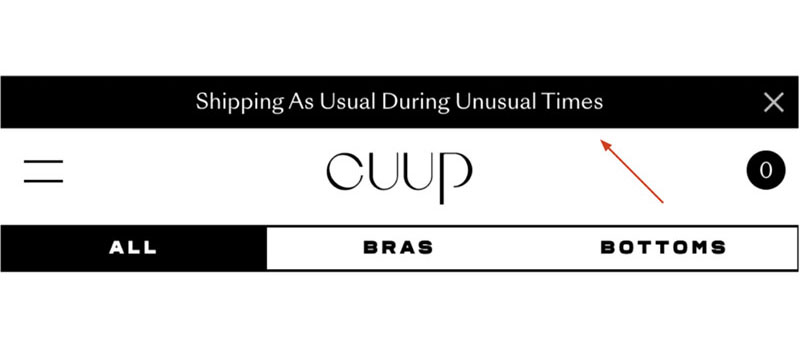

Image source: shopcuup.com
This is uncharted territory we as marketers and ecommerce professionals are navigating. It’s so important to tread carefully and be thoughtful about our approach. Lead with empathy as marketing tactics can be perceived as abrasive or insensitive.
In addition to providing updated shipping messaging, consumers also want to know that they can trust the brand they are purchasing from during times of crisis. In a recent survey by Edelman, 71% of respondents agreed that if “they perceive that a brand is putting profit over people, then they will lose trust in that brand forever.” While 77% also said, “they want brands to only speak about products in ways that show they are aware of the crisis and the impact on people’s lives.”
“
77% of respondents said they want brands to only speak about products in ways that show they are aware of the crisis and the impact on people’s lives.
EDELMAN
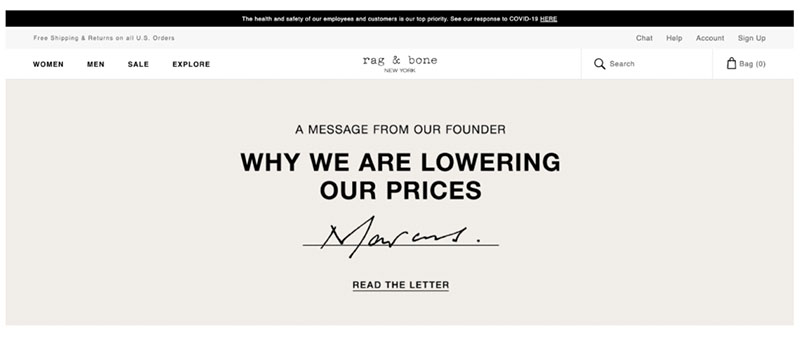

The Rag & Bone homepage. Read the letter here: www.rag-bone.com/from-our-founder/.
2. PROMOTE CATEGORIES + PRODUCTS SUITED FOR A WORK-FROM-HOME LIFESTYLE
Highlighting comfortable clothes and loungewear on the homepage has become a growing trend among ecommerce sites. It’s an effective strategy–particularly if you’re discounting these items.
We recommend building a custom recommendation strategy for “comfortable picks” that highlight work from home styles.
You can also go beyond this to feature any products that have been particularly popular lately (maybe their Product Detail Pages are garnering a lot of views). Sometimes what comforts people during these times can be surprising. Always keep an eye on your consumer data to see what areas of your site are experiencing an uptick of users so you can capitalize on it.
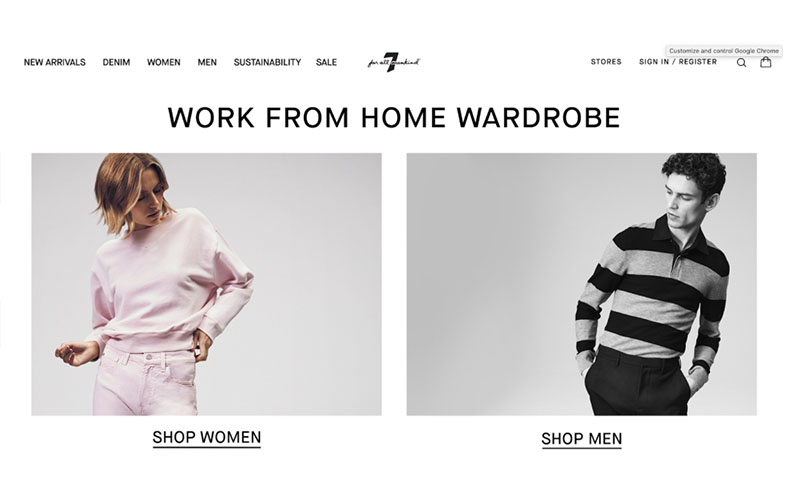

Corra’s client 7 For All Mankind highlighting ‘Work From Home Wardrobe’ on the homepage.
Alternatively, if you’re a beauty brand you may want to consider highlighting skincare and self-care products (soaps, lotions, facemasks, etc.) as opposed to makeup and fragrance.


Image source: www.sephora.com
3. IMPLEMENT A LOYALTY PROGRAM
Loyalty points are a great incentive to get people to purchase and come back to your site for future purchases. This is not only an incentive during COVID-19 but can also help build brand loyalty and sustain a returning user base for years to come.
A lot of times when a consumer first shops with you online it’s a trial run. They may be testing your product and experience out to decide if they want to purchase from you again. If all goes well, often it just takes an added push in the form of a discount or incentive, to place another order.
Retention is the new acquisition. Brian Balfour, CEO of Reforge says, “If your retention is poor then nothing else matters.” The longer a customer stays with your brand, the more potential touchpoints for monetization. “Highly-engaged customers buy 90% more often and spend 60% more per transaction.”
Corra partners with Yotpo to build rewards programs. If you’d like ideas for what this may look like for your brand visit their loyalty program generator.
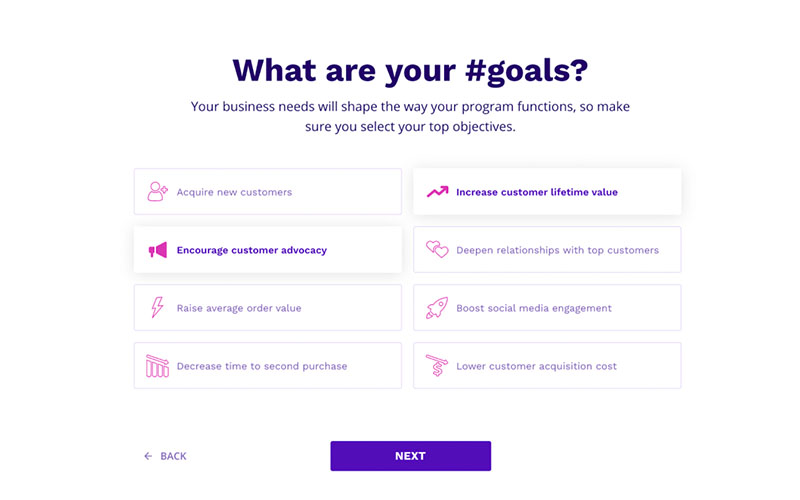

Reach out to us to learn more about implementing a rewards program that is unique to your brand.
4. EMPHASIZE PAYMENT SOLUTIONS ON PRODUCT DETAIL PAGES AND CUSTOMIZE MESSAGING
Many consumers may be reluctant to spend money in the midst of prolonged uncertainty. You can ease their minds by offering a payment solution and tailoring the messaging to address their reservations. If you use Klarna, for example, you can customize the message on the product detail pages to be pertinent to current times.
You can also highlight the “buy now, pay later” message on the home page and category landing pages. Consumers tend to feel less guilty about indulging in a purchase that they can pay over time. If your consumers have the option to pay in four interest free installments, you’ll want to highlight that they’ll only be charged a fraction of the total order value upfront. For example, if two sweatshirts come to $250, you’ll specify that they’ll only owe $62.50 when they place the order.
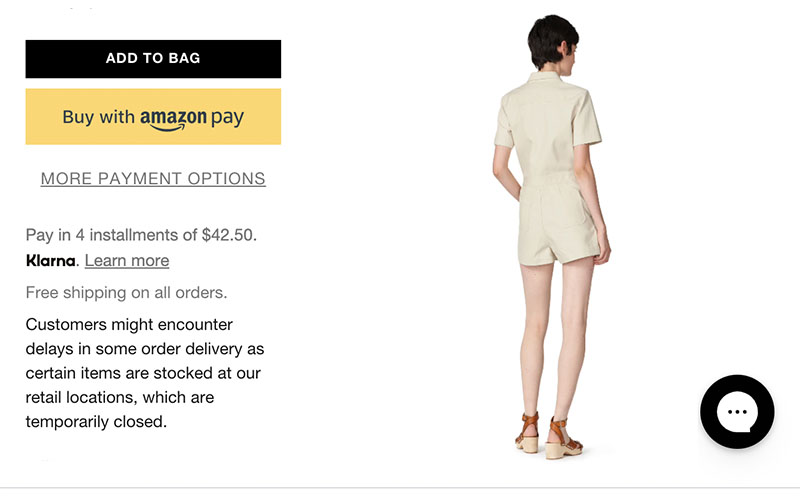

Pay with Klarna on www.apc-us.com.
5. DISCOUNT UNDER-PERFORMING STOCK
Now may be a good time to discount deadstock to help with cash flow and make room for new inventory. You can experiment with different messaging, i.e. “Final Sale,” “Flash Sale,” “Last Chance,” and so on.
Additionally, by using a personalization/optimization solution like Corra’s partner Dynamic Yield, you can target previous customers with high AOV (average order values) and create sales just for them with messaging around VIP, exclusive sale, loyalty appreciation, or friends and family discounts.
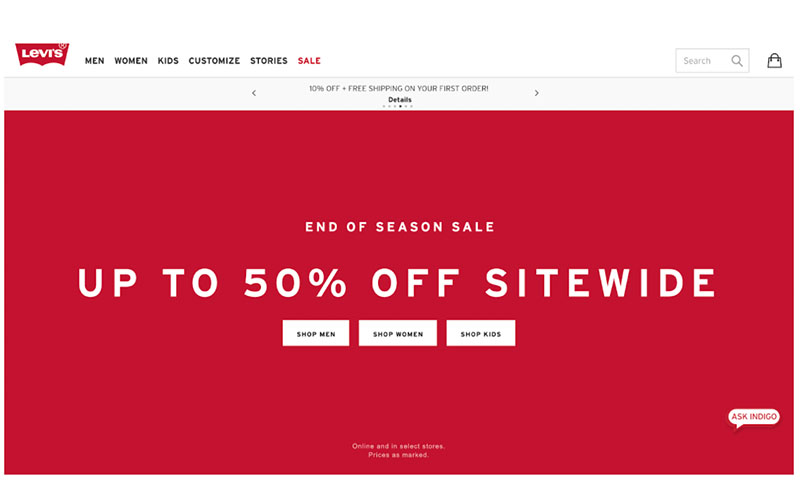

Image Source: www.levi.com/US/en_US/
6. REMOVE EXIT POINTS IN CHECKOUT
If your checkout abandonment rate is high you’ll want to eliminate any distractions or opposing messaging that isn’t guiding them directly through the checkout.
Even something like an option to “sign in” can be a distraction to shoppers, if it’s not thoughtfully placed. The checkout flow should usually begin with the option to sign in and once a shopper has made that decision, there is no need to re-present the option. This essentially gives the user an exit point to leave the purchase flow and potentially not return.
7. CREATE URGENCY WITH LOW STOCK WARNINGS
It’s a good idea to display low stock warnings on the PDP (Product Detail Page) not only when they click on a size, but also prior to them clicking on it to create a sense of urgency. You can also test out subtle copy on the PLP (Product Listing Page) i.e. “last pieces” or “low stock” and carry similar messaging through to the cart page to reduce cart abandonment rates.
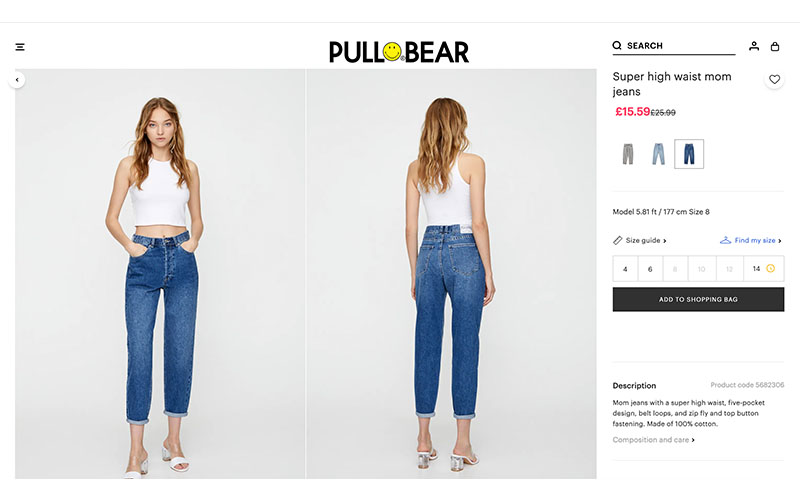

Image source: www.pullandbear.com
On average around 60% of users will view a product on the PDP but in most cases only 6-8% are going to add that product to their cart. By including a low stock warning when a visitor clicks on a size, you’re aiming at those 6-8%. What Pull&Bear is doing is aiming at the 60% (who have yet to click on a size). They’re saying, “if you’re a size 14 and you like this product, you should buy it now because it may not be here tomorrow.”


Super high waist mom jeans at Pull&Bear.
If you would like actionable insights and recommendations specific to your brand, inquire about Corra’s Corra’s Conversion Accelerator program. It’s essentially a bundle of strategic audits intended to help you quickly grow revenue. The accelerator is completely customizable, so merchants can pick and choose audits to suit their needs.
﹏
THE CONVERSION ACCELERATOR
CX AUDIT
Eliminate friction from your customer journey.
TAG AUDIT
Build a solid tag architecture.
OPTIMIZATION AUDIT
Serve smarter recommendations to your segments.
UGC AUDIT
Incorporate UGC where it’s relevant and effective.
SITE SPEED AUDIT
Boost site speed by at least 20%.
TECHNICAL SEO AUDIT
Increase traffic through better content indexation.

